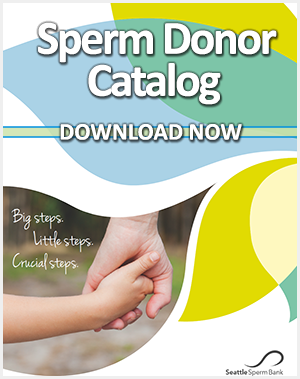Written by B. Mulcaster
While the first part of this series (Reproductive Options for Same Sex Couples – Part 1: Overview) was meant to provide an overview of the topic and some brief descriptions of each assisted reproductive option a same-sex couple can utilize, the second part will deal with the expectations of prospective same-sex parents versus the reality that same-sex parents pursuing a family may face with regard to issues or obstacles before they can begin in earnest.
Being a parent isn’t an easy path regardless of sexual orientation or family structure; but it does stand to reason that same-sex couples wanting a family do face a unique set of challenges that heterosexual couples simply aren’t subjected to. For example, if the desire between the partners is to achieve parenthood with one of the partner’s own genetic material then the other partner will not be genetically represented in the child. While that issue is of course limited to the participants in the relationship (with full acknowledgment that it also adds to the financial stress/medical challenges/overall complexity of the situation), it also underlines another issue – depending on which partners genetic material is used, the couple will ultimately have to seek out a sperm donor or an egg donor (and possibly a surrogate to carry the pregnancy). This creates its own set of challenges before the actual process has even begun.
There is one thing that can assist in alleviating some of the complexity – information. Same-sex couples can make the process much easier by educating themselves about the options that are available to them for assisted reproduction. Many female couples will choose to enlist the services of a fertility center as a starting point; a fertility center will assist female couples with insemination or in-vitro processes. The sperm specimen used should be acquired from a reputable sperm bank – fertility centers will insist upon this as it negates any potential future legal issues surrounding paternity rights. The couple can peruse various cryobank stocks until they have selected a sample, it is then delivered to the couple and the process can begin when the physical conditions are optimal for whichever partner is going to carry the child.
In-vitro will be suggested if pregnancy does not occur quickly or naturally. In-vitro is a much more complex process than insemination; it requires specialized care and equipment in order to succeed and even then the result is not guaranteed, although it has a much better chance of succeeding when the woman is younger than 35 years of age. While there is virtually no chance of any immediate or long term health risks to using the in-vitro method, it is very costly and is (usually) not covered by healthcare. An important factor to note is that while the in-vitro method carries no risk to the mother, there is some *evidence to suggest that children born of in-vitro pregnancies may have a slightly elevated chance of genetic disorders due to the fact that the in-vitro method may involve multiple gestations.
In-vitro usually involves a six week period of co-ordination beforehand; when the couple pursuing in-vitro are male the process can take much longer due to the need to select and co-ordinate an egg donor and a surrogate. The sperm being used may need to undergo an ‘elective quarantine’ period in accordance with infectious disease and tissue transplantation protocol (based in part upon recommendations of the American Society for Reproductive Medicine) to ensure the surrogate and the baby are not at potential risk of infectious disease. The age of the chosen egg donor is also important as women of young reproductive age (under the age of 27) have more available and viable eggs which can be obtained during the in-vitro process, this increases the odds of successful embryo development.
The path to assisted reproduction for same-sex couples can be long and arduous at the best of times; while many of the particulars outlined here could be construed as delays by the impatient, it should be thoroughly understood that the processes, protocol, requirements and preparatory measures are all in place for a reason – to ensure that every couple that chooses to pursue assisted reproduction has an equal chance at the desired outcome of starting a family.
*Source – http://www.asrm.org/news/article.aspx?id=337&terms=(+%40Publish_To+Both+Sites+or+%40Publish_To+ASRM+Only+)+and+quarantine

